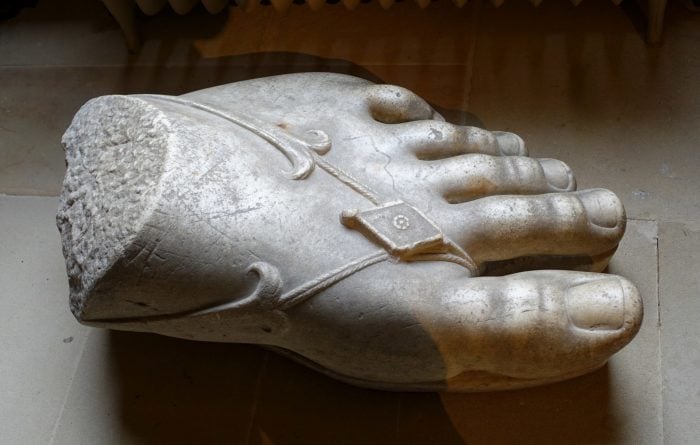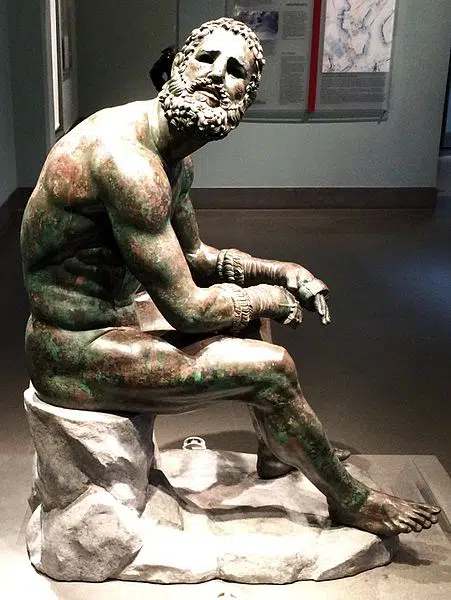
The famous “Greek foot,” commonly found on ancient Greek statues, was initially attributed to the Golden Ratio that ancient artists were seeking for their works.
Later, the “Greek toe” was thought to be an anthropological characteristic of Greeks and other Mediterranean peoples.
According to nomenclature in the arts, there are three types of toes: the Greek, with the longer second toe; the Roman, with the first three being of the same length and the last two shorter; and the Egyptian, with a long big toe and the others tapering away at a 45 degree angle.
In the bronze sculpture of The Boxer at Rest and the marble Diana of Versailles, or Botticeli’s The Birth of Venus, all the subjects appear with a longer second toe.
“Morton’s toe” is a medical condition
In the early 20th century, orthopedic surgeon Dudley J. Morton (1884–1960) diagnosed that the foot shape we call “Greek toe” is in fact a medical condition; thereafter, it was given the name Morton’s toe.
In 1927, Morton discovered the longer second toe condition and named it “Metatarsus Atavicus.” Further research revealed more about the prevalence and nature of the condition.
Greek toe is hereditary and is thought to cause various musculoskeletal issues that often require appropriate care.
People with Morton’s toe eventually get aches and pains in their feet because of how weight is distributed across the feet, especially on the first and second metatarsals.
A 2004 study comparing professional athletes to non-athletes found that professional athletes tended to have Morton’s toe more frequently than non-athletes.

Do most Greeks have Greek toe?
Early studies of the “human toe formula” posited a single-gene form of inheritance, meaning that most Greeks would have a longer second toe.
However, a 1973 study from Cathleen C. Papadopoulos and Albert Damon produced findings to the contrary. The researchers proposed “polygenic inheritance,” meaning that a trait is determined by a collection of genes.
The study findings show that people with longer second toes are found throughout the world, constituting approximately ten to thirty percent of individuals in various populations and various ethnic groups.
In a study published in 2015, Periklis Vounotrypidis and Polyxeni Noutsou, both medical scientists, studied the morphological features of the foot under the classical taxonomy in the Greek population.
People from different regions of Greece with different backgrounds with the presence of past or current symptoms in lower limbs were used as part of the study.
It was found that 62 percent of men and 32 percent of women in the study exhibited the Greek type of foot.
Specifically, 51.7 percent exhibited the Egyptian type of foot, 46 percent the Greek foot, and only 2.5 percent had the Roman toe.
Furthermore, five of the 163 subjects presented mosaicism, meaning that one foot had a Greek toe and the other the Egyptian toe.
Furthermore, 26 percent of men and 23 percent of women had long suffered from pain in their lower extremities.

The Greek foot in the arts
Whatever the medical origin of the condition, the Greek foot very likely represented an ideal of beauty in ancient times, even a divine trait as seen in the statues of deities.
Ancient Greeks placed great importance on the Golden Ratio, as seen in almost all works of Hellenistic art.
This geometric concept is expressed in nature in the veins of leaves or in the feathers of birds. Certain parts of the Acropolis design exhibit this ratio, as well.
The mathematician Euclid (4th—3rd century BC) is credited for being the first to mention the Golden Ratio, and the divine proportions have fascinated scholars throughout the centuries.
Renaissance artists used the Golden Ratio for harmony, balance, and aesthetic perfection, and architects also used it in the designs of their buildings.
See all the latest news from Greece and the world at Greekreporter.com. Contact our newsroom to report an update or send your story, photos and videos. Follow GR on Google News and subscribe here to our daily email!



